 Marlin’s first production repeating lever action rifle was the Model 1881; tubular magazine fed, top ejecting and chambered for the .45-70 and .40-60. The Model 336 came along in 1948 and remains a popular design, showcasing Marlin’s most distinguishing features.
Marlin’s first production repeating lever action rifle was the Model 1881; tubular magazine fed, top ejecting and chambered for the .45-70 and .40-60. The Model 336 came along in 1948 and remains a popular design, showcasing Marlin’s most distinguishing features.
The Model 336 is a closed top receiver, round breech bolt design. This approach provides full support of the breech bolt, allows side ejection and incorporates a large vertical locking bolt that holds the breech bolt in battery when the lever is closed.
Originally chambered for the 30-30 Winchester and .32 Special, in 1953, the .35 Remington chamber was added.
In 1956, the Model 336 left the factory drilled and tapped for scope mounts and with Micro-Groove type rifling in place of Ballard rifling
In 1959, the Marlin was given a gold plated trigger and the top and bottom receivers were sand blasted to a matte finish.
In 1962, Marlin began to phase out the 32 Special chamber from the Model 336 product line and by 1964 it was dropped completely.
In 1982 the gold trigger went away, but returned in 2014.
In 1984 the rifle received a hammer block safety.
While there have been many running changes throughout the years, some things have remained constant. The Marlin utilizes a good number of forged parts, including: receivers, trigger plates, hammers, levers, carriers, and locking bolt.
|
Marlin Model 336C |
|
| Origin | Ilion, NY |
| Manufacturer | Remington |
| Model | Model 336C35 |
| Type | Lever Action |
| Caliber | 35 Remington |
| Capacity | 6+1 |
| Barrel Length | 20.00″ |
| Micro-Groove Rifling | 1:16″ 12 Groove Micro Groove |
| Nominal Weight | 7.0 lbs |
| Overall Length | 38.5″ |
| Stock | American Black Walnut |
| Hardware | Blued Steel |
| Length of Pull | 13.5″ |
| Drop at comb | 1.25″ |
| Drop at heel | 2.00″ |
| Sights | Semi Buckhorn / Hooded Ramped |
| Scope | Drilled and Tapped |
| Trigger Pull | 5 lbs. 11 oz. |
| Safety | Hammer Block Safety |
| MSRP |
$635 |
The Model 336C sold for $61 in 1948. Adjusting the 1948 price for inflation, today’s price would be $637. The Marlin has retained its American black walnut stocks and all of the good steel pieces. Marlin has done a good job of holding the price on a traditional American made rifle under Remington’s stewardship.
Safety mechanisms and subsystems….
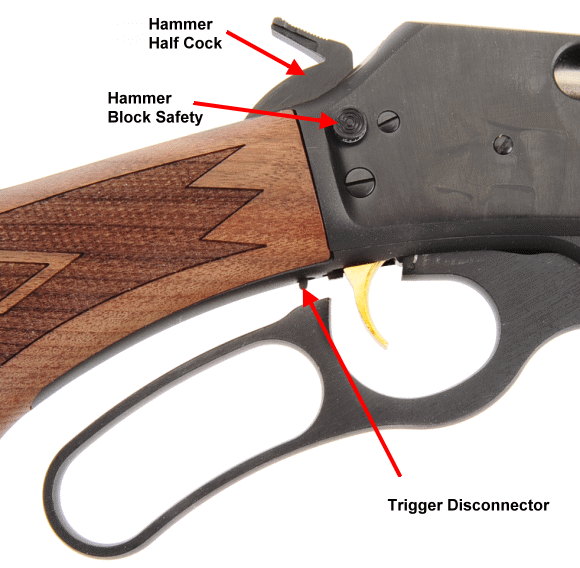
In 1984, the use of the half cock position as the rifle’s only manual safety was discontinued when a hammer block safety was added. In addition to manual safeties, passive safeties remain. The trigger disconnector prevents the trigger from being pulled until the lever is completely closed and compressing the disconnector.
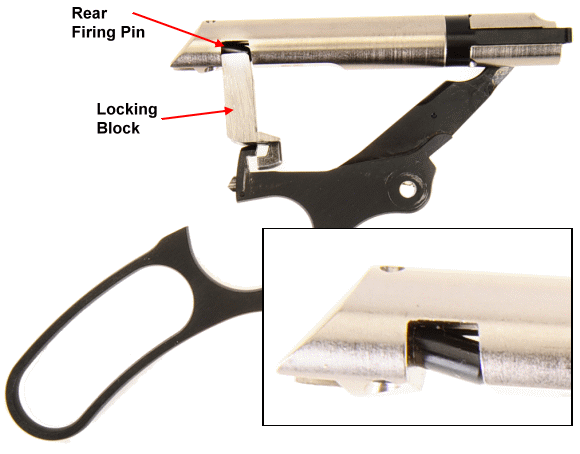
The Marlin 336 design utilizes a two piece firing pin, cleverly identified as rear firing pin and front firing pin. With the lever down, the rear firing pin is spring loaded down at an angle to prevent it from passing through the center of the bolt and driving the front firing pin into the primer of a chambered round. With the lever closed and the bolt pulled into battery, the locking block raises the rear firing pin into alignment with the front firing pin. In that alignment, when the hammer falls, the rear firing pin is driven into the front firing pin and into the primer of a chambered round.
A source of pent up energy…
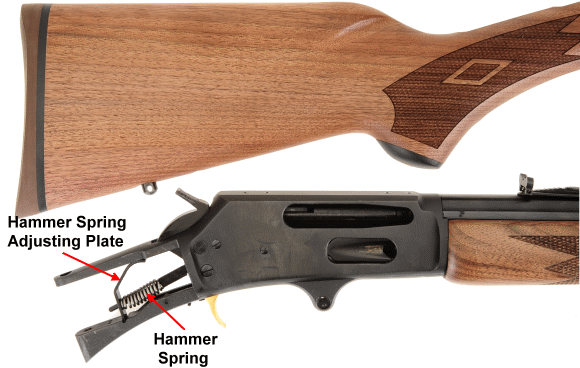
The Marlin 336 is relatively easy to take down and to finesse. The adjusting plate can be easily reformed to increase or decrease tension and Wolff Springs offers a selection of reduced and extra power hammer springs that influence trigger pull.
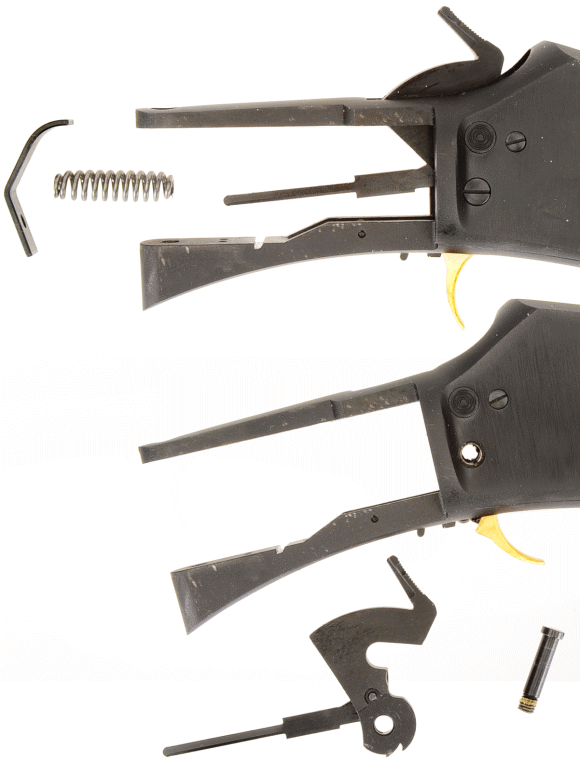
The hammer… mainspring and adjusting plate can be removed and reinstalled with finger pressure and a little practiced technique. With hammer lowered – removal; top of the adjusting plate is rotated forward and slipped out to the side. Reinstall; slip a corner of the adjusting plate’s foot into the frame notch and roll the top forward and under the tang. Wear safety glasses. With the hammer spring out, the hammer and hammer strut assembly comes out by removing the hammer screw.
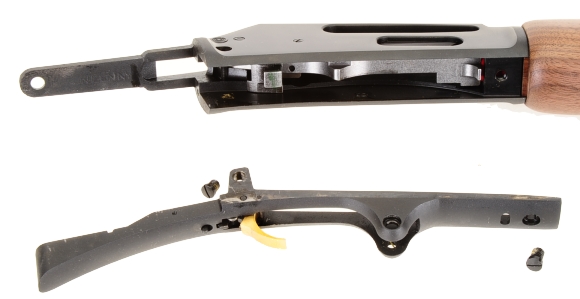
With the hammer out, the front and left side trigger guard plate assembly screws come out and the trigger guard plate pulls out. Reinstall bottom screw first and it will draw the left side screw, trigger guard and receiver into alignment. Good idea to hand start as they are easy to strip if forced in with the trigger guard plate slightly out of alignment…. you know, improperly assembled.

With the trigger guard plate removed, the locking block lifts out. The carrier is pulled by removing the screw above the hammer screw and lowering the carrier through the bottom. The loading gate is removed by unscrewing the small fastener located just aft of the loading gate port. Generally, on my personal Marlins, only the lever, bolt and ejector are removed to clean the barrel from the chamber end. Periodically, I will pull the locking block on my 45-70s when I have done a good deal of shooting heavy handloads or +P labeled factory ammo to check its condition. I’ve not had one that required service.
Overall…
Time was taken to disassemble the Marlin before going on with the rest of the project, primarily to show how the rifle is put together and its basic functions.The quality of the parts and assembly are very good. No burrs, finish blemishes, dinged screw heads, or poor wood to metal fit. I guess that should be a given, but the last couple of years of Marlin production, prior to Remington’s acquisition in 2007, had some pretty rough firearms getting to dealers’ shelves. After a brief transition period, and Remington’s investment in new tooling, Marlin firearms came back around to the exceptional quality Marlin had demonstrated for so many years. The subject gun is a good example.
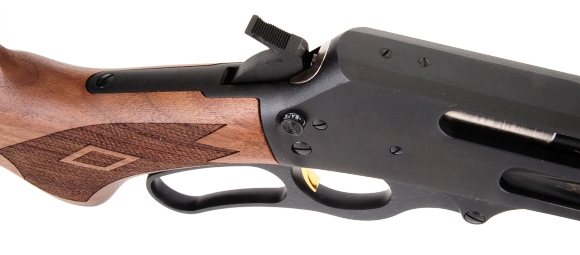
To me, while a little crisp from being new, the 35 Remington version feels about the same as my 30-30 WCF Model 336 and Model 1895 45-70 Guide guns I’ve used for deer and hog hunting. The geometry of the stock puts the metallic sights in eyeball alignment as quickly as it is brought to the shoulder . The short overall length and light weight keeps the sights on target and comfortable in any shooting position.
Next up is live fire data collection, both factory ammo and handloads, and a chance to compare the 336C’s accuracy in 35 Remington with other calibers. A scope will be mounted, even if only to make people scream, but more so to ensure it is the rifle’s accuracy being assessed and not my Barney Google eyesight. Look it up… on Google.
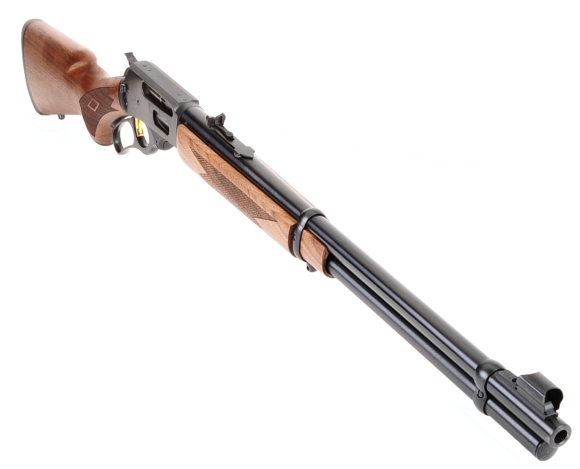

Email Notification